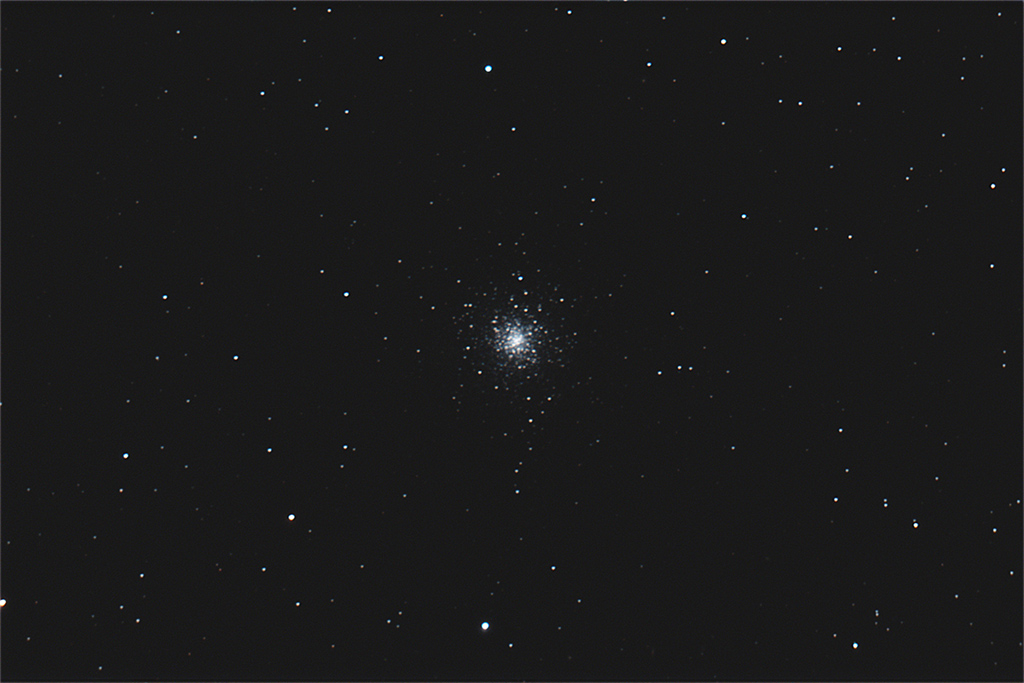
Telescope: Astro-Tech 8” f/8 Ritchey-Chretien, Orion Atlas EQ-G
Camera: ZWO ASI071MC Pro, -10C, Gain 200, Baader Mk III MPCC
Filter: Orion Imaging Skyglow Filter
Guide scope: Astro-Tech 60mm, Meade DSI Pro II, PHD
Exposure: 17x120s, saved as FITS
Darks: 32x120s, saved as FITS
Flats: 32×0.2s, sky flats taken at dusk
Average Light Pollution: Red zone, Bortle 8, poor transparency
Lensed Sky Quality Meter: 18.3 mag/arc-sec^2
Stacking: Mean with a 2-sigma clip.
White Balance: Nebulosity Automatic
Software: Nebulosity, Deep Sky Stacker, Photoshop
NGC457 is one of my favorite open clusters in just about any size telescope. It makes a fine target for binoculars and small telescopes and becomes a very rich field in larger scopes. The two bright distinctive foreground stars makes it fairly easy to locate. In a small telescope it is worth taking some time with this field. At first your eye may only see the two bright foreground stars and a few of the brighter stars of the cluster. As your eyes relax you may start to see some of the fainter background stars and the cluster will begin to blossom into a beautiful field of stardust.
NGC 457 is located high overhead after sunset.









Recent Comments